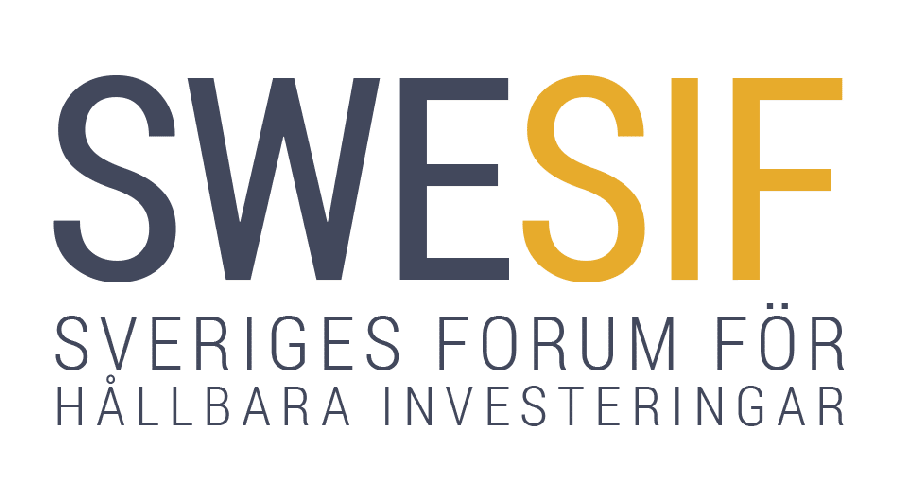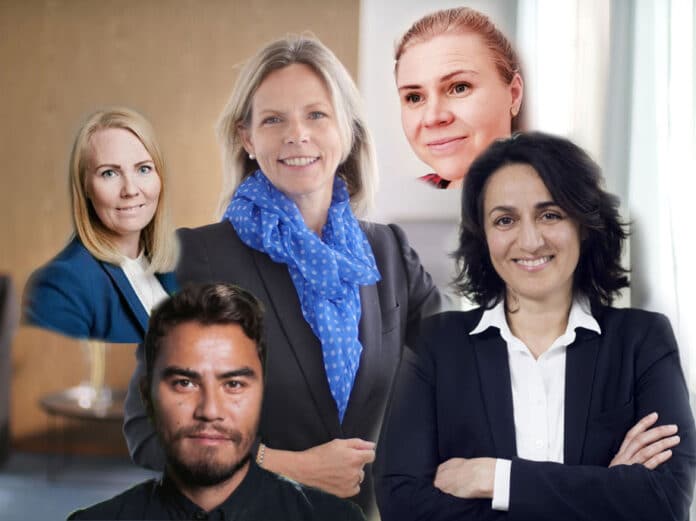The start of a new year is a good time to look ahead. So it is for the Nordic Sustainable Investment Forums (SIFs). NordSIP took the opportunity to put some questions to all the Nordic SIFs to hear about their expectations and hopes for 2022.
This summary was originally published in English. All quotes below are translated from the original.
Of course, each SIF has its own agenda and different focus areas. However, certain themes recur, such as the need to improve the quality of ESG data and the EU regulatory framework and its implementation at both national and international level.
Themes for 2022
In Iceland this year, IcelandSIF will host the Nordic SIF meeting, which is scheduled to take place in Reykjavík in June. Kristbjörg M. Kristinsdóttir, President of Iceland SIF and Chief Financial Officer of Stefnir Asset Management, says the focus of the meeting will be the sea. “We intend to present some research on the sea, for example on its biodiversity. We will also organise various workshops on ocean-related environmental, social and political issues. The sea can be a source of great economic progress and innovation. However, exploitation of its resources can also lead to less desirable outcomes and generate controversy. This is what we will be discussing during our two-day conference in Reykjavik,” says Kristinsdóttir.
“In our planning for 2022, we have taken into account three major themes that we believe our members are most likely to focus on during the year,” says Susanne Bolin Gärtner, Chair of Swesif and Head of External Funds at Danske Bank. “Firstly, we expect climate change to remain at the top of the agenda. Last year’s IPCC report and COP26 only reinforced the need and urgency among financial industry players to coordinate efforts to achieve zero net emissions,” says Gärtner. “The European regulatory framework will also be a top priority for our members. The work required to align internal processes, from investment to reporting and screening, is in full swing and will require significant investments of time and resources from financial institutions,” Gärtner added. “Last, but not least, we want to focus on the ‘S’ in ESG. The pandemic has highlighted existing social tensions and generated new ones. Climate change also raises the risk of growing inequalities on a global scale, and we expect investors will need to take these consequences more seriously than ever before,” adds Gärtner.
According to Dewi Dylander, chairman of DanSIF and head of sustainable investments at PKA, DanSIF will focus on the new EU regulation and on increasing access to better ESG data. The Danish government’s new target of a 70% reduction in greenhouse gas emissions by 2030 will be another priority area.
Lars Erik Mangset, board member of NorSIF and chief advisor for Climate Change at KLP, also believes that the new EU regulation will set the agenda for 2022. Once the regulation enters into force, the focus will be on strengthening internal sustainability expertise in many areas. Many roles will need to be created and processes designed to ensure compliance with the new rules.
“It will also be a year of increased scrutiny from various quarters. For example, the increasing number of financial institutions aiming for net zero emissions will put pressure on those that have not yet made such a commitment. At the same time, investors who have already declared a net-zero target for their portfolio must implement it now. How can investors influence the real economy? And how to balance financial and climate goals? Can investors continue to put their money in fossil energy while having zero targets? These are some of the questions that the financial sector needs to address,” Mangset continues.
Leila Räsänen, coordinator at FinSIF, believes that “navigating net-zero, climate change and biodiversity will be on the agenda this year. These topics are linked to the biggest challenges for sustainable development and they permeate all ESG themes. The enormous problems of climate change and biodiversity loss can be approached from many ESG angles. Both Nordic and other European countries will also be busy following the evolution of the EU taxonomy framework and keeping up with the latest EU requirements.”
Changes in 2022
Swesif believes that changes this year will be driven by the EU’s legislative agenda on sustainable finance. “We expect the Nordic countries to be heavily influenced by decisions related to EU legislation. At the same time, debates on, for example, nuclear power, forestry and cement have already been intense in Sweden in 2021. This means that institutions will have to get used to working in a fast-changing environment. This makes Swesif’s mission to disseminate, drive and increase knowledge about sustainable investment more relevant than ever,” says Gärtner.
DanSIF’s regulatory focus will be more specifically on the impact of the EU taxonomy on green investments. “The perception of green investments will change drastically when investors start taking the EU taxonomy into account,” says Dylander. “Demand will also lead to better availability and quality of ESG data, especially in terms of CO2. Hopefully we will also find a standardised approach to using offsets and including scope 3 data,” Dylander adds. The DanSIF chairman also expects the world to begin to realise “that investors will not achieve CO2 reduction targets unless companies reduce their CO2 emissions. This will lead to more focus on active ownership and investors will push companies towards becoming Paris-compliant and reducing their CO2 emissions.” Last, but not least, Dylander expects that biodiversity and the circular economy will become more prominent as people begin to understand the “crucial role they can play in the green transition and for a sustainable future.”
“We hope to see a clearer focus on standardisation in the market. Green and transition labels on loans and bonds or on company profiles will increasingly need to become objective and standardised,” says NorSIF’s Mangset. “We also believe that 2022 will be the year when more innovative partnerships are formed, either within the financial sector, between financial and industrial sectors, or between private and public entities,” Mangset adds.
FinsSIF’s Räsänen notes that sustainable financial regulation is not exclusive to the EU. “Globally, in the top 50 economies, there are more than 730 policy revisions and over 500 existing policy instruments linked to sustainable finance. Reporting requires more resources from investors, but will also provide more transparency in practice,” explains Räsänen. Alongside policy, regulation and reporting, “the sheer volume and quality of ESG data presents opportunities and challenges in balancing analysis from the perspective of responsible investment,” Räsänen adds.
On the agenda
In addition to the NordicSIF conference, IcelandSIF will focus on the EU directives and rules for sustainable investment. Implementation of the EU acquis in Iceland is lagging behind somewhat at the moment, so it needs to be prioritised, according to Kristinsdóttir. Attention will also be paid to sustainable fixed income investments (green, blue and social fixed income instruments) and “Icelandic responsible investment options” that will hopefully appeal to other Nordic investors.
In addition to climate, EU legislation and the ‘S’ in ESG, Swesif will also be finalising or possibly extending its ongoing projects, the most important of which is the new version of the Sustainability Profile. “It is an existing template that we developed in collaboration with our members before EU legislation came into the picture. The aim is to explain the sustainability of financial products to end customers. In 2021, we started intensive work with our members and other stakeholders in the local asset management sector to redesign the Sustainability Profile and adapt it to the new EU legislation. We hope to see results already in the first half of the year,” said Gärtner. Swesif’s other projects focus on fixed income markets and long-term investments. “We also want to start looking for solutions to help our members with sustainability education,” adds Gärtner. Finally, when discussing the impact of the pandemic on events, Gärtner hopes that Swesif will be able to offer various hybrid solutions to allow its members to participate in both physical and virtual events.
DanSIF expects to continue with the human rights events that began in 2021. “Through their investments, Danish investors are exposed to many companies with actual or potential negative impacts on human rights. Both investors and companies have a responsibility to respect human rights according to the UN Guiding Principles. The first session in 2022 will focus on investments in challenging countries and contexts,” says Dylander. Other events on human rights in Myanmar/Qatar will be held later in 2022. Other topics on DanSIF’s agenda for 2022 also include ESG in illiquid assets, biodiversity and ESG in governance.
The main focus of NorSIF will be to further develop and disseminate knowledge on responsible and sustainable finance. “We expect to expand our cooperation with other organisations in 2022, and through this create added value for our members in the form of events and projects. Now that the sustainability agenda is affecting the entire financial sector, we need to think about both taking care of our mature members and helping those members who have more recently started to integrate sustainability. We also need to reach out to those units within asset management that are new to sustainability, such as the risk and compliance functions,” explains Mangset.
Räsänen refers to a survey of FinSIF members that highlighted themes relevant to Finland in 2022. Topics raised by members include: biodiversity, electrification, the EU taxonomy and sustainable finance, climate change and net-zero emissions, ESG data and ESG performance measurement, sustainable food procurement, ESG issues related to alternative investments and sovereign bonds, among others. “Members who participated in the survey say they would like to participate in live meetings rather than online events. They also ask for concrete workshops on sustainable investments. FinSIF intends to use the hybrid model for its events, if possible, and practical workshops will be on the agenda – online or live,” adds Räsänen. “FinSIF will also translate its revised Responsible Investment Manual into English by summer 2022 to help more interested parties navigate the complexities of ESG and responsible investment,” concludes Räsänen.


